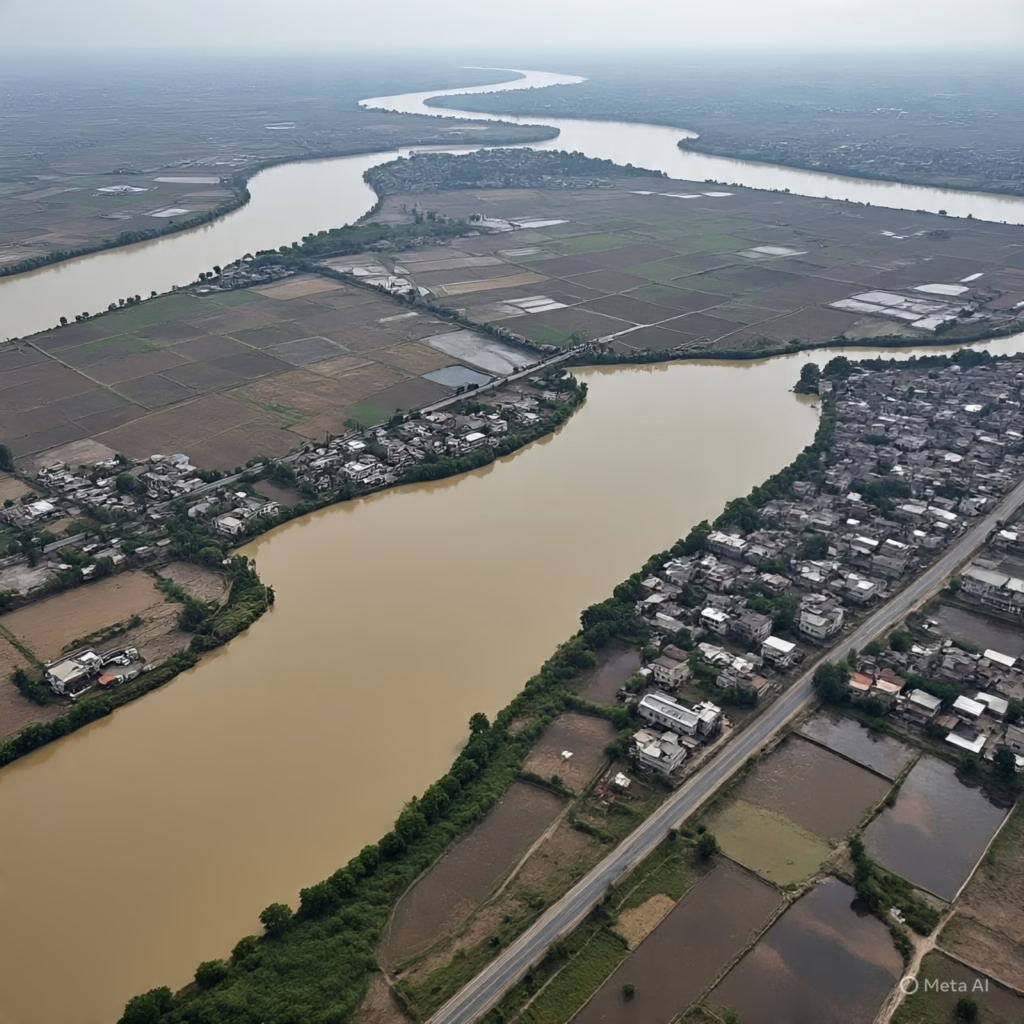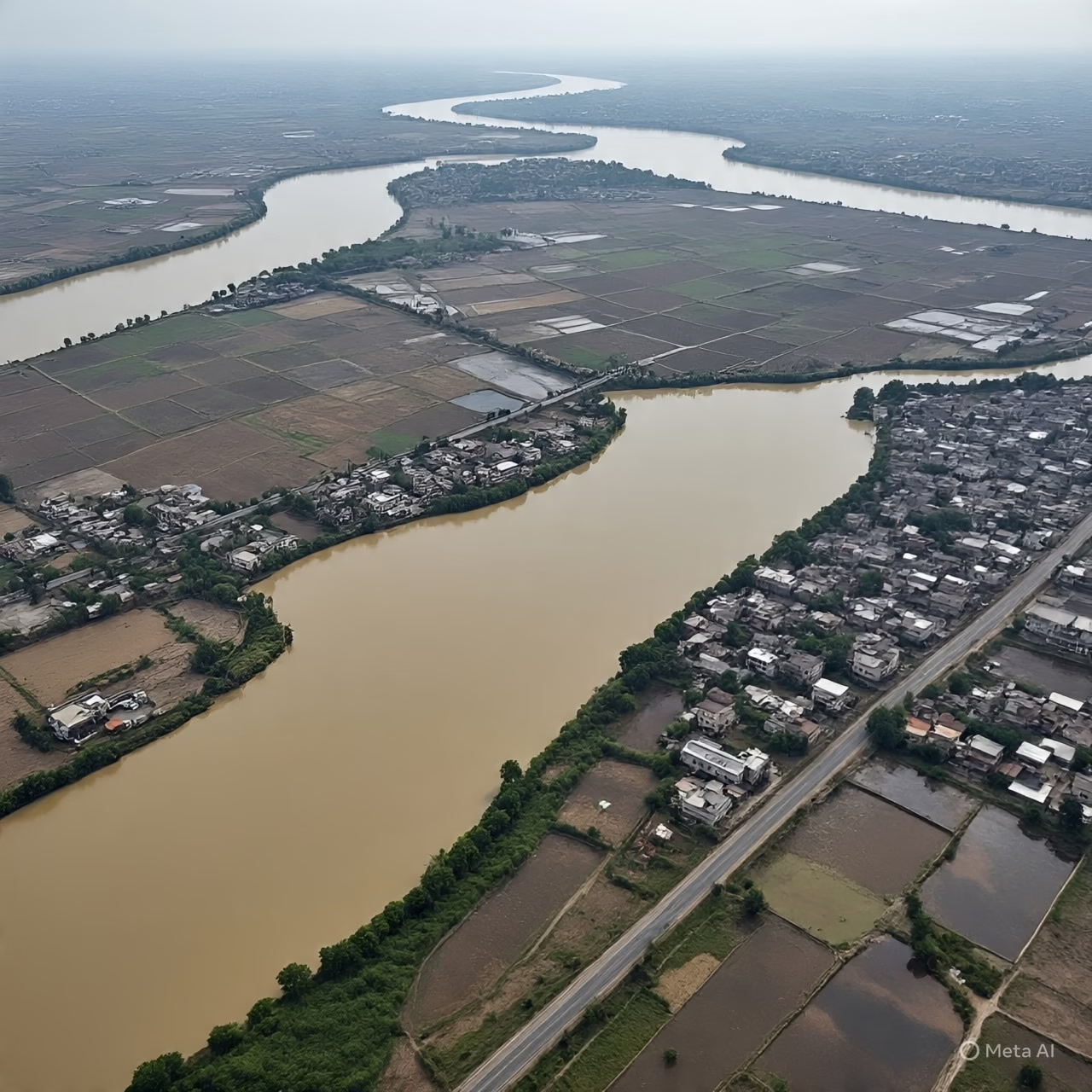
Introduction
Punjab floods Pakistan: Why They Happen and How to Prepare
Punjab floods Pakistan devastate communities every year. Residents face loss, displacement, and economic hardship. In this post, I explain what drives these floods, highlight urgent actions to reduce risks, and help communities stay safe.
Causes of Floods in Punjab, Pakistan
1. Intense Monsoon Rains
Seasonal monsoon rains deliver most of Pakistan’s yearly precipitation but have grown more extreme. In 2022–2025, unusually heavy rainfall triggered severe floods across Punjab. Experts link these patterns to climate change, which intensifies and prolongs the monsoon season.
2. Cross-Border Dam Water Releases
India’s releases from upstream dams in Kashmir elevated river levels in the Ravi, Sutlej, and Chenab. These sudden surges compounded flood risks in eastern Punjab, forcing mass evacuations and emergency responses.
3. Glacier Melt and Seasonal Runoff
Pakistan’s glaciers feed its major rivers. Rising temperatures accelerate glacial melt, sending more water into rivers already swollen by monsoon rains—especially in early summer.
4. Deforestation and Watershed Degradation
Tree cover shrank drastically—forests fell from ~33 % to under 5 % of land. Deforestation eradicated soil binding, amplified runoff, and increased silt load in rivers. Authorities attribute this to illegal logging and the “timber mafia.”
5. Siltation and Reduced Storage Capacity
Silt accumulation in riverbeds and reservoirs reduces their ability to hold water. Many dams lost over 20 % of their capacity due to silt, causing overflow when monsoon rains arrive.
6. Poor Urban Planning and Encroachments
Cities and towns expanded into flood plains. Illegal housing, blocked drainage, and unplanned growth reduced natural water absorption zones—heightening urban flood risk.
7. Atmospheric Anomalies (Westerly Wave + Jet-Stream Shift)
Climate scientists observed that in recent summers, a westerly wave combined with a disrupted jet stream brought moisture from Western disturbances into Punjab—amplifying monsoon rains and causing unusually heavy localized flooding.
Ripple Effects and Real-World floods Impacts
Human Toll & Displacement
The 2025 floods displaced over a million people in Punjab. In one event, more than 1.2 million people suffered as floods breached riverbanks. On several occasions, authorities evacuated over 200,000 residents following dam releases.
Economic and Infrastructure Damage
Flood waters destroyed crops, homes, and roads across hundreds of villages. Drainage failures worsened urban flooding. Satellite imagery and drone surveillance supported relief operations.
Political Responses and Planning Measures
Leaders urged building more dams and reservoirs to manage flood water. Transparency in dam releases gained attention, and there’s growing pressure to enforce urban planning and forest protection.
Highly Searched Related Keywords (bolded where they appear)
climate change (above; also used as related keyword)
monsoon rains (in Causes #1)
Other additional keywords included:
glacier melt
deforestation
Prevention and Preparedness
Restore Forests and Protect Watersheds
Governments must replant trees in critical catchment areas and enforce anti-logging laws to reduce erosion and siltation.
Build and Maintain floods Dams/Reservoirs
Completing projects like Diamer-Bhasha and Mohmand dams will help store floodwaters and reduce peak flows.
Strengthen Flood Plains and Embankments
Avoid constructing on flood plains, restore natural buffer zones, and reinforce embankments with modern designs.
Upgrade Urban Drainage Systems
Expand and maintain city drainage networks to manage heavy urban runoff and prevent flash floods.
Coordinate Trans-Boundary floods Water Management
Create formal agreements with India on dam water releases and sharing of upstream hydrological data.
Early Warning Systems and floods Community Training
Use technologies like satellite-based mapping, thermal drones, and CCTV monitoringhttp://CCTV monitoring to inform timely evacuations.
Climate-Adaptive Planning
Integrate flood risk into urban development and enforce building codes that account for extreme weather.
FAQ
Q1: Why do floods in Punjab coincide with monsoon season?
Because monsoon rains deliver the bulk of Punjab’s annual precipitation. When those rains intensify—due to climate change—they trigger widespread flooding.
Q2: Do glacier melts significantly contribute to flooding in Punjab?
Yes. Melting mountain glaciers add water to rivers before monsoons even begin, compounding flood risks during the rainy season.
Q3: Can dams reduce flood damage in Punjab?
Properly designed dams and reservoirs can store excess water and regulate flows—but they require timely construction and careful management of releases.
Q4: How does deforestation worsen floods?
Without tree cover, soil erodes into rivers, reducing river capacity and increasing runoff—raising the chances and severity of floods.
Call to Action
Follow us on social Media, and get in touch with us on Blogs@manyviral.com
Together, we can build a safer future for Punjabi communities threatened by floods
https://manyviral.com/can-trumps-big-beautiful-bill-pass-the-senate/
You might to like read this blog

Leave a Reply